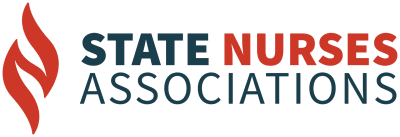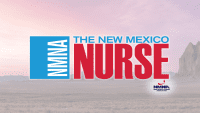Introduction
According to the New Mexico Workforce Committee report, in 2023, about 15910 active Registered Nurses were in New Mexico, and 54.5% worked in Albuquerque. All counties are below the committee’s parameters except Albuquerque (New Mexico Workforce Committee, 2023). This review examines the nursing shortage crisis’ sources, effects, and solutions.
Nursing Shortages Causes
Rising Demand and Aging Population
The US population is aging, with Baby Boomers retiring. The US Census Bureau predicts that the number of Americans 65 and older will nearly double from 52 million in 2018 to 95 million in 2060, aggravating healthcare demand (Fermini & Bell, 2022). The elderly population, due to chronic diseases and co-morbidities, requires prolonged healthcare, straining the system and workforce.
Nursing Workforce Demographics
Nurses are aging and retiring. The Health Resources and Services Administration (HRSA) reported that almost one million RNs are above 50 (HRSA, 2024). Retirement of experienced nurses worsens the shortage by reducing skills and knowledge.
Nursing Faculty Shortage
Nursing faculty shortages are due to lower earnings than clinical nursing positions and strict credentials. Many nursing schools have problems recruiting and retaining talented educators. In 2023, US nursing schools rejected over 65,000 competent applicants due to a lack of faculty, clinical sites, and classroom space (AACN, 2024).
Job Dissatisfaction and Burnout
Nurses experience stress and burnout due to long hours, high patient-to-nurse ratios, and emotionally stressful work situations. The COVID-19 outbreak worsened burnout and job dissatisfaction. According to a 2021 ANA poll, 62% of nurses felt overwhelmed, and 55% considered quitting due to stress and burnout (ANA, 2023).
Effect on Patient Care
Nursing shortages impact patient safety and quality. High patient-to-nurse ratios promote mortality, medical mistakes, and longer hospital stays. According to research published in the Journal of the American Medical Association (JAMA), each additional patient per nurse increases mortality by 7% and by about 5 per 1000 patients when the ratio of nurses per patient increases from 1:4 to 1:8 (Aiken et al., 2002). Overworked nurses make more mistakes, worsening patient outcomes.
Rising Healthcare Costs
Nursing shortages affect the economy beyond healthcare. Readmissions and problems raise healthcare expenses. Hospitals may spend more on temporary staffing needs, travel nurses, or overtime compensation. These solutions are more expensive for management than a well-staffed permanent workforce.
Possible Solutions
Enhancing Nursing Education
Expanding and improving nursing education is essential to solving the shortage. Several methods can accomplish this:
- Increased financing for nursing schools can boost capacity, hire more teachers, and enhance facilities. State and federal governments and private groups can provide crucial funding. New Mexico finances various federal, state-, and privately-run nursing schools and grants residents studying nursing.
- Adopting innovative educational models, like online programs and accelerated degree tracks, can enhance nursing education accessibility and flexibility. Many students, especially those who need support attending on-campus programs, can use these models.
- Partnerships with healthcare organizations to offer clinical experiences and develop job opportunities. These agreements allow experienced nurses to educate while still practicing, helping to alleviate the faculty shortage.
Better Working Conditions
Improving working conditions and addressing burnout and job unhappiness will help retain nurses:
- Enforcing safe staffing ratios can improve patient care and nurse well-being by reducing individual nurses’ workloads. Several states have passed minimum nurse-to-patient ratio laws, but more are needed.
- Support systems offering counseling, stress management, and professional development can assist nurses in managing job expectations. Hospitals and healthcare institutions should focus on staff mental health and well-being.
- Providing clear career advancement pathways and professional growth opportunities can improve job satisfaction and retention by offering leadership training, ongoing education, and specialist certifications.
- To attract younger generations into nursing, better pay packages, lower taxes on overtime pay, direct contracts without/minimal taxation, incentives such as lower APRs on home purchases/rentals, car loans, and subsidized education loans can make it more appealing to become a nurse.
Utilizing Technology
Technology can reduce administrative hassles and improve efficiency in mitigating nursing shortages:
- Optimizing electronic health record (EHR) systems to be user- friendly systems to be user-friendly can save nurses’ documentation time, shifting focus on patient care. Advanced features like speech recognition and predictive analytics boost efficiency.
- Expanding telehealth services can reduce nursing workload by enabling remote monitoring and consultation. Nurse shortages are worse in rural and underprivileged areas, but telehealth can help.
- AI/Automation can help with mundane chores like medicine administration, patient monitoring, and scheduling. By eliminating administrative tasks, nurses can focus on patient care.
Policy, Advocacy
Systemic change and resolving nursing shortage causes require effective policy and advocacy:
- Expanding loan forgiveness programs for nurses working in underserved or critical care settings might encourage entry and retention in the nursing profession. New Mexico offers loan forgiveness to nurses who serve in the state for at least two years.
- Prioritizing Healthcare Workforce Investment: Policymakers should consider nurses’ vital role in the healthcare system. This covers education, training, and workforce development funds.
- Advocacy: Nursing organizations like the the American Nurses Assocation (ANA) and the American Association of Colleges of Nursing (AACN) seek to promote policies that benefit the nursing workforce. Nurses can advocate by meeting with lawmakers, joining professional groups, and highlighting their issues.
Conclusion
The New Mexico healthcare system faces nursing shortages affecting patient care, costs, and nurse well-being. Boosting nurse education, working conditions, technology, and supportive legislation are needed to solve this problem. Comprehensive and coordinated action can ensure a strong, resilient nursing workforce to satisfy the nation’s healthcare demands. To achieve a healthier, more egalitarian society, we must prioritize investing in nurses, the future of healthcare.
References
Aiken L.H., Clarke S.P., Sloane D.M., Sochalski J., Silber J.H., (2002). Hospital Nurse Staffing and Patient Mortality, Nurse Burnout, and Job Dissatisfaction. Journal of American Medical Association (JAMA). https://jamanetwork.com/journals/jama/fullarticle/195438
ANA Nursing Resource Hub (2023). Why nurses leave nursing. Nursingworld.org. https://www.nursingworld.org/content-hub/resources/nursing-leadership/why-nurses-quit/
Fermini B., Bell D.C., (2022). An aging population may affect drug attrition and pre-clinical cardiovascular safety assessment. Pharmaco-Toxicological Methods Journal. https://doi.org/10.1016/j.vascn.2022.107184.
HRSA publication (2024). Registered Nurse National Sample Survey. https://bhw.hrsa.gov/data-research/access-data-tools/national-sample-survey-registered-nurses
Rossetter R., (2024). Nursing faculty shortage. Facts on AACN. https://www.aacnnursing.org/Portals/0/PDFs/Fact-Sheets/Faculty-Shortage-Factsheet.pdf
New Mexico Health Care Workforce Committee Annual Report (2023). University of New Mexico Health Sciences Center. https://digitalrepository.unm.edu/nmhc_workforce/11/
























